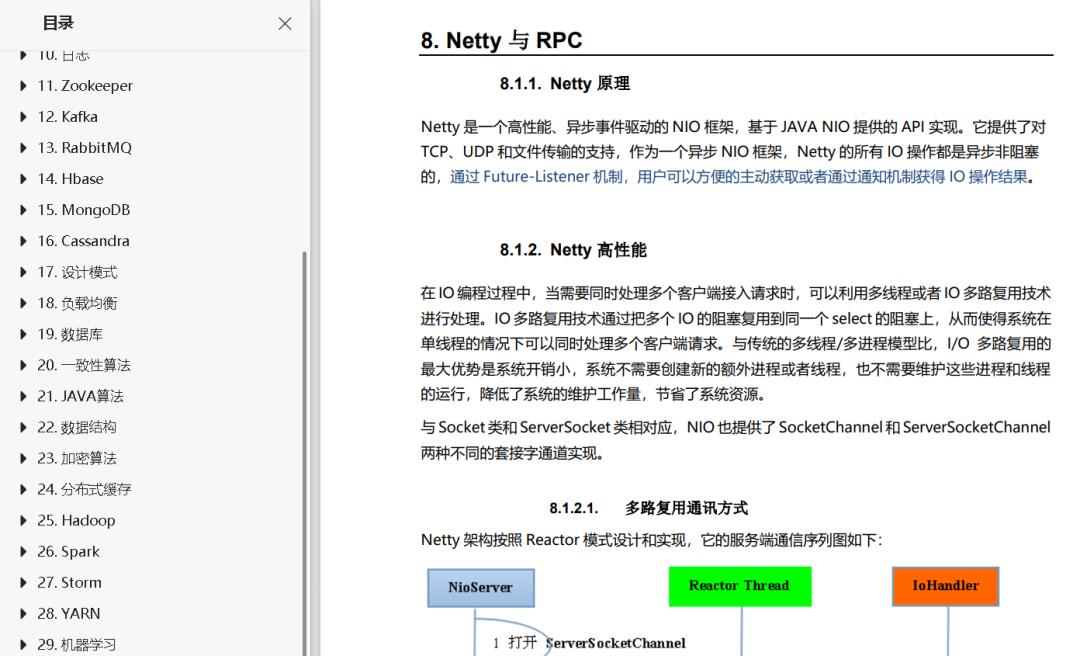四种优雅的统计代码耗时方法
Posted androidstarjack
tags:
篇首语:本文由小常识网(cha138.com)小编为大家整理,主要介绍了四种优雅的统计代码耗时方法相关的知识,希望对你有一定的参考价值。
点击上方关注 “终端研发部”
设为“星标”,和你一起掌握更多数据库知识https://jitwxs.cn/5aa91d10.html
作者:Jitwxs
一、前言
代码耗时统计在日常开发中算是一个十分常见的需求,特别是在需要找出代码性能瓶颈时。
可能也是受限于 Java 的语言特性,总觉得代码写起来不够优雅,大量的耗时统计代码,干扰了业务逻辑。特别是开发功能的时候,有个感受就是刚刚开发完代码很清爽优雅,结果加了一大堆辅助代码后,整个代码就变得臃肿了,自己看着都挺难受。因此总想着能不能把这块写的更优雅一点,今天本文就尝试探讨下“代码耗时统计”这一块。
在开始正文前,先说下前提,“代码耗时统计”的并不是某个方法的耗时,而是任意代码段之间的耗时。这个代码段,可能是一个方法中的几行代码,也有可能是从这个方法的某一行到另一个被调用方法的某一行,因此通过 AOP 方式是不能实现这个需求的。
二、常规方法
2.1 时间差统计
这种方式是最简单的方法,记录下开始时间,再记录下结束时间,计算时间差即可。
public class TimeDiffTest
public static void main(String[] args) throws InterruptedException
final long startMs = TimeUtils.nowMs();
TimeUnit.SECONDS.sleep(5); // 模拟业务代码
System.out.println("timeCost: " + TimeUtils.diffMs(startMs));
/* output:
timeCost: 5005
*/public class TimeUtils
/**
* @return 当前毫秒数
*/
public static long nowMs()
return System.currentTimeMillis();
/**
* 当前毫秒与起始毫秒差
* @param startMillis 开始纳秒数
* @return 时间差
*/
public static long diffMs(long startMillis)
return diffMs(startMillis, nowMs());
这种方式的优点是实现简单,利于理解;缺点就是对代码的侵入性较大,看着很傻瓜,不优雅。
2.2 StopWatch
第二种方式是参考 StopWatch ,StopWatch 通常被用作统计代码耗时,各个框架和 Common 包都有自己的实现。
public class TraceWatchTest
public static void main(String[] args) throws InterruptedException
TraceWatch traceWatch = new TraceWatch();
traceWatch.start("function1");
TimeUnit.SECONDS.sleep(1); // 模拟业务代码
traceWatch.stop();
traceWatch.start("function2");
TimeUnit.SECONDS.sleep(1); // 模拟业务代码
traceWatch.stop();
traceWatch.record("function1", 1); // 直接记录耗时
System.out.println(JSON.toJSONString(traceWatch.getTaskMap()));
/* output:
"function2":["data":1000,"taskName":"function2"],"function1":["data":1000,"taskName":"function1","data":1,"taskName":"function1"]
*/public class TraceWatch
/** Start time of the current task. */
private long startMs;
/** Name of the current task. */
@Nullable
private String currentTaskName;
@Getter
private final Map<String, List<TaskInfo>> taskMap = new HashMap<>();
/**
* 开始时间差类型指标记录,如果需要终止,请调用 @link #stop()
*
* @param taskName 指标名
*/
public void start(String taskName) throws IllegalStateException
if (this.currentTaskName != null)
throw new IllegalStateException("Can't start TraceWatch: it's already running");
this.currentTaskName = taskName;
this.startMs = TimeUtils.nowMs();
/**
* 终止时间差类型指标记录,调用前请确保已经调用
*/
public void stop() throws IllegalStateException
if (this.currentTaskName == null)
throw new IllegalStateException("Can't stop TraceWatch: it's not running");
long lastTime = TimeUtils.nowMs() - this.startMs;
TaskInfo info = new TaskInfo(this.currentTaskName, lastTime);
this.taskMap.computeIfAbsent(this.currentTaskName, e -> new LinkedList<>()).add(info);
this.currentTaskName = null;
/**
* 直接记录指标数据,不局限于时间差类型
* @param taskName 指标名
* @param data 指标数据
*/
public void record(String taskName, Object data)
TaskInfo info = new TaskInfo(taskName, data);
this.taskMap.computeIfAbsent(taskName, e -> new LinkedList<>()).add(info);
@Getter
@AllArgsConstructor
public static final class TaskInfo
private final String taskName;
private final Object data;
我是仿照 org.springframework.util.StopWatch 的实现,写了 TraceWatch 类,这个方法提供了两种耗时统计的方法:
通过调用 Start(name) 和 Stop() 方法,进行耗时统计。
通过调用 Record(name, timeCost),方法,直接记录耗时信息。
这种方式本质上和“时间差统计”是一致的,只是抽取了一层,稍微优雅了一点。
注:你可以根据自己的业务需要,自行修改 TraceWatch 内部的数据结构,我这里简单起见,内部的数据结构只是随便举了个例子。
三、高级方法
第二节提到的两种方法,用大白话来说都是“直来直去”的感觉,我们还可以尝试把代码写的更简便一点。
3.1 Function
在 jdk 1.8 中,引入了 java.util.function 包,通过该类提供的接口,能够实现在指定代码段的上下文执行额外代码的功能。
public class TraceHolderTest
public static void main(String[] args)
TraceWatch traceWatch = new TraceWatch();
TraceHolder.run(traceWatch, "function1", i ->
try
TimeUnit.SECONDS.sleep(1); // 模拟业务代码
catch (InterruptedException e)
e.printStackTrace();
);
String result = TraceHolder.run(traceWatch, "function2", () ->
try
TimeUnit.SECONDS.sleep(1); // 模拟业务代码
return "YES";
catch (InterruptedException e)
e.printStackTrace();
return "NO";
);
TraceHolder.run(traceWatch, "function1", i ->
try
TimeUnit.SECONDS.sleep(1); // 模拟业务代码
catch (InterruptedException e)
e.printStackTrace();
);
System.out.println(JSON.toJSONString(traceWatch.getTaskMap()));
/* output:
"function2":["data":1004,"taskName":"function2"],"function1":["data":1001,"taskName":"function1","data":1002,"taskName":"function1"]
*/public class TraceHolder
/**
* 有返回值调用
*/
public static <T> T run(TraceWatch traceWatch, String taskName, Supplier<T> supplier)
try
traceWatch.start(taskName);
return supplier.get();
finally
traceWatch.stop();
/**
* 无返回值调用
*/
public static void run(TraceWatch traceWatch, String taskName, IntConsumer function)
try
traceWatch.start(taskName);
function.accept(0);
finally
traceWatch.stop();
这里我利用了 Supplier 和 IntConsumer 接口,对外提供了有返回值和无返回值得调用,在 TraceHolder 类中,在核心代码块的前后,分别调用了前文的 TraceWatch 的方法,实现了耗时统计的功能。
3.2 AutoCloseable
除了利用 Function 的特性,我们还可以使用 jdk 1.7 的 AutoCloseable 特性。说 AutoCloseable 可能有同学没听过,但是给大家展示下以下代码,就会立刻明白是什么东西了。
// 未使用 AutoCloseable
public static String readFirstLingFromFile(String path) throws IOException
BufferedReader br = null;
try
br = new BufferedReader(new FileReader(path));
return br.readLine();
catch (IOException e)
e.printStackTrace();
finally
if (br != null)
br.close();
return null;
// 使用 AutoCloseable
public static String readFirstLineFromFile(String path) throws IOException
try (BufferedReader br = new BufferedReader(new FileReader(path)))
return br.readLine();
在 try 后方可以加载一个实现了 AutoCloseable 接口的对象,该对象作用于整个 try 语句块中,并且在执行完毕后回调 AutoCloseable#close() 方法。
让我们对 TraceWatch 类进行改造:
实现 AutoCloseable 接口,实现 close() 接口:
@Override
public void close()
this.stop();
public TraceWatch start(String taskName) throws IllegalStateException
if (this.currentTaskName != null)
throw new IllegalStateException("Can't start TraceWatch: it's already running");
this.currentTaskName = taskName;
this.startMs = TimeUtils.nowMs();
return this;
public class AutoCloseableTest
public static void main(String[] args)
TraceWatch traceWatch = new TraceWatch();
try(TraceWatch ignored = traceWatch.start("function1"))
try
TimeUnit.SECONDS.sleep(1); // 模拟业务代码
catch (InterruptedException e)
e.printStackTrace();
try(TraceWatch ignored = traceWatch.start("function2"))
try
TimeUnit.SECONDS.sleep(1); // 模拟业务代码
catch (InterruptedException e)
e.printStackTrace();
try(TraceWatch ignored = traceWatch.start("function1"))
try
TimeUnit.SECONDS.sleep(1); // 模拟业务代码
catch (InterruptedException e)
e.printStackTrace();
System.out.println(JSON.toJSONString(traceWatch.getTaskMap()));
/* output:
"function2":["data":1001,"taskName":"function2"],"function1":["data":1002,"taskName":"function1","data":1002,"taskName":"function1"]
*/四、总结
本文列举了四种统计代码耗时的方法:
时间差统计
StopWatch
Function
AutoCloseable
列举的方案是我目前能想到的方案。当然可能有更加优雅的方案,希望有相关经验的同学一起交流下~

BAT等大厂Java面试经验总结

想获取 Java大厂面试题学习资料
扫下方二维码回复「BAT」就好了
回复 【加群】获取github掘金交流群
回复 【电子书】获取2020电子书教程
回复 【C】获取全套C语言学习知识手册
回复 【Java】获取java相关的视频教程和资料
回复 【爬虫】获取SpringCloud相关多的学习资料
回复 【Python】即可获得Python基础到进阶的学习教程
回复 【idea破解】即可获得intellij idea相关的破解教程
关注我gitHub掘金,每天发掘一篇好项目,学习技术不迷路!如果喜欢就给个“在看”以上是关于四种优雅的统计代码耗时方法的主要内容,如果未能解决你的问题,请参考以下文章
别再用 System.currentTimeMillis 统计耗时了,太 Low,试试 Spring Boot 源码在用的 StopWatch吧,够优雅
别再用 System.currentTimeMillis 统计耗时了,太 Low,试试 Spring Boot 源码在用的 StopWatch吧,够优雅